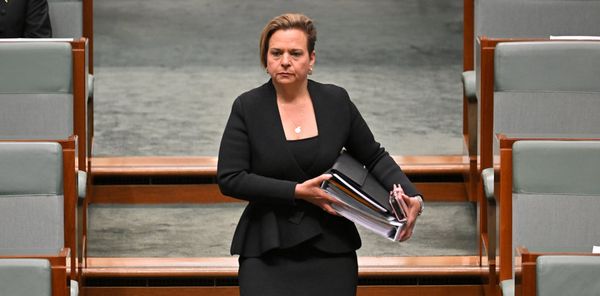
Battersea power station offered no prospect of luxury living when Tony Belton became a local councillor in 1971. The coal-fired behemoth was nearing closure after 40 years of belching soot over London, and would spend almost as long in dereliction and blight as a result of false starts at redevelopment.
By 1991, most people visiting the area were there for the dogs’ home or council rubbish dump. Squatting pigeons were the power station’s only residents, and steel bracing protected its 48-metre-high brick walls from collapse.
“It was largely completely flat, derelict land, almost the total distance of Nine Elms Lane on both sides of the road. It was a desert, really,” says Belton, strolling through the glitzy shopping centre and apartment complex that now fills the old boiler rooms, where penthouses can change hands for more than £30m. “It’s unimaginable. There was nothing here, and certainly no one living here.”
However, 1991 is the point in time that the government believes should still be used to determine the council tax paid by Battersea’s new multimillionaire inhabitants – which leaves the residents of some of London’s most expensive homes paying less than does an average household in Blackpool, Stoke-on-Trent or Nottingham.
With councils across England in financial crisis after years of central government austerity, calls are growing to reform council tax. Most authorities increased the levy by the maximum allowed 4.99% this month, raising about £2bn and adding about £100 to average household bills.
However, local government leaders say this is not enough to prevent more councils from going bust without wholesale reform to a system that has barely changed since its hurried introduction under John Major to replace Margaret Thatcher’s controversial poll tax.
“It all gets very silly. New valuations are based on ‘how much would this property have been worth in 1991’, which is a fairly nonsensical discussion,” says John Merry, the deputy mayor of Salford, who chairs the group Key Cities, a cross-party association representing large councils.
“Major needed a quick fix to sort out the poll tax debacle. But it’s never changed from the beginning. It’s a ridiculous system.”
Council tax bands in England are set using property values on 1 April 1991, ranging from band A, for homes worth up to £40,000, up to £320,001 and above for the highest band, H. The system of funding local government is different across the UK: Northern Ireland has rates instead of council tax. In Scotland, council tax is also based on 1991 property values, but the Holyrood government raised the relative tax rates for bands E to H in 2017. The Welsh government is the only one to have revalued properties – in 2005, using 2003 valuations – and it is now looking at ways to bring the system further up to date.
To police the labyrinthine system, the government’s Valuation Office Agency (VOA) decides which band to apply, employing more than 500 staff in 25 locations dedicated to working out how much things were worth when Chesney Hawkes’s The One and Only was topping the charts.
The task is, however, complicated by three decades of construction adding at least 4.5m new homes to England’s housing stock, alongside the conversion of millions of existing buildings for residential use – including Battersea power station and countless factories, shops and barns. In 2022-23 alone, the VOA added about 300,000 properties to the council tax register, and handled almost 50,000 challenges – usually by people trying to save money by moving to a lower band.
To get around this, the VOA estimates how much a property might have sold for 33 years ago based on similar homes in the area. And if an area has changed significantly – for example, if it was used for industrial purposes – it looks at the closest similar residential areas.
However, the system sets in stone property values that bear little relation to modern Britain after a more-than-quadrupling of average house prices over the past three decades. With even bigger increases in values in London and the south-east, critics say council tax has become a turbocharger of inequality.
“It is clearly a deeply broken system. That valuation on 1991 properties is so ridiculously out of date now that it’s almost laughable,” says Stuart Hoddinott, a senior researcher at the Institute for Government thinktank. “Particularly when you have people in relatively low-value properties, who are generally worse off, paying quite a lot as a share of their property value compared with someone in an enormous mansion in London.”
Three decades ago, there were only a handful of residential properties surrounding Battersea power station, on a polluted bank of the Thames dominated by abandoned gas works, coal yards and bulldozed factories that once produced anything from cement and chemicals to oil and vinegar. Pimlico and Chelsea, just north of the river, were home to the nearest mansions, in a stark contrast played on by the 1968 film Up the Junction.
Belton recalls taking an EU regeneration commissioner to a tower at New Covent Garden market in the 1980s to survey the barren Nine Elms landscape adjacent to the power station: “I was telling him what a fantastic opportunity this is – you could do anything you like. And his response was: ‘Why don’t you give up and move out of London?’”
Plans for the building, which features on the cover of Pink Floyd’s album Animals, came and went – ignoring advice from the Duke of Edinburgh to “knock the bloody thing down” – including proposals for a theme park and new stadium for Chelsea FC. Belton was there for them all, including Arnold Schwarzenegger and George Clooney burying a Batman and Robin time capsule at the site in 1997 to mark Warner Bros’ plans for a 32-screen cinema.
Every scheme fell apart until 2012, when a Malaysian consortium bought the Grade II*-listed landmark with a view to building luxury flats and shops. It opened in 2022 amid accusations that the development – having benefited from the £1.1bn extension of the Northern Line, an investment backed by the taxpayer with Battersea Power Station Development Company (BPSDC) contributing £300m as part of its planning obligations – lacked affordable housing and was a playground for the super-rich.
“Most people I know wouldn’t dream of living here. They think it’s built for foreign investors, not ordinary people and Londoners,” Belton says.
Despite the lack of any real comparable reference points, VOA valuers did give the power station’s most expensive £8m-plus penthouses the top band H for council tax, in a category that would rank them alongside Buckingham Palace and 10 Downing Street. However, other luxury flats were put in lower bands, including one that Land Registry records show sold for £3.2m, being in band G – implying a 1991 value of between £160,001 and £320,000.
The VOA said it could not comment on specific locations, but added that it could also consider council tax bands already allocated to similar properties, in addition to sales evidence from 1991. BPSDC said it had shared sales prices and completion dates with the VOA, but was otherwise not involved in the banding decisions.
Even in band H, Battersea’s new residents will still pay a tiny fraction of the value of their property in council tax: Wandsworth council, which covers the area including the power station, charges about £2,000 a year for the band – less than 0.03% of the £8m sale price.
In comparison, residents of an average-priced home in Hartlepool (£124,000), where average band D council tax is £2,377.61, can expect to pay almost 2% of their property value in council tax.
This partly reflects the fact that councils in northern England had a smaller share of top-banded properties in 1991 than the south, where the most expensive homes were. Over time, this has forced councils in the north and Midlands to drive up council tax by more than those in the south to deliver the same increase in funding.
“Let’s say we introduced council tax today, with a rate of less than 1% in Westminster and 2% in Wigan. I think people would be up in arms,” says Andrew Dixon, the founder of Fairer Share, a campaign group calling for ministers to scrap council tax and replace it with a proportional property tax. “The bands are so narrow between A and H, and property prices have changed so much, that it ends up as a de facto poll tax.”
As the general election looms, neither main party has set out plans to reform council tax. With the banding system having remained untouched for three decades, there are concerns that change could force large numbers of asset-rich but cash-poor homeowners in London and the south-east to sell up, triggering a collapse in property prices.
However, critics say leaving it untouched retains a system that is now just as damaging as the poll tax it sought to replace.
“The problem has only got worse as huge numbers of councils are struggling financially,” says Dixon. “It’s absurd that council tax is trying to provide important services like social care off 1991 property values, it just makes no sense. It’s neither understandable, nor is it fair.”
• This article was amended on 8 April 2024. An earlier version referred to the Northern Line extension being funded by £1.1bn of “taxpayer money”. It has been clarified that the scheme was taxpayer backed (through the Public Works Loan Body), and that Battersea Power Station Development Company contributed £300m.







